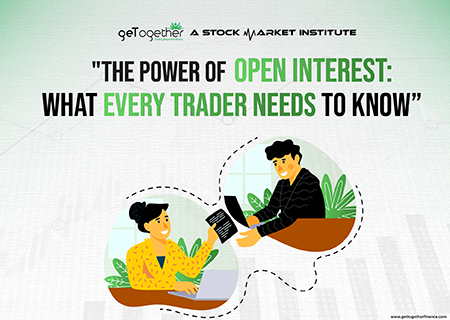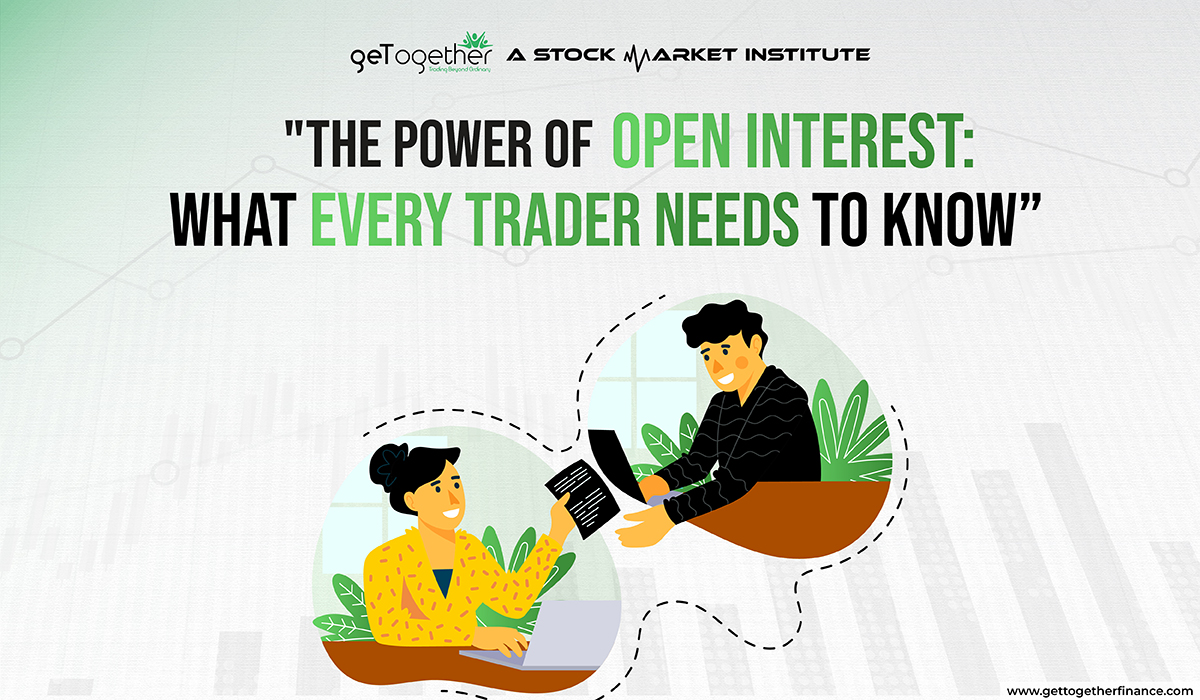The Power of Open Interest: What Every Trader Needs to Know


Table of Contents
ToggleOverview
If you are a trader wanting to uncover the hidden gems within the financial market, then you are in for a treat. If you know about technical analysis, options, and futures then it is safe to assume that you must have heard about open interest once at a point in time.
In the world of trading, open interest is a lagging indicator, a vital but often overlooked aspect of trading. If merged with technical analysis, it can do wonders in your trading journey by being an amazing add-on.
Ps- If you are unaware of options, I would request you to please go through our blog on Options Trading to get a better understanding of this blog.
What is an open interest?
OI also goes by the name of open contracts or open commitments. Which refers to the total number of outstanding or withholding derivative contracts that have not been settled.
In simpler language for each buyer of a futures contract, there must be a seller. From the time a buyer or seller opens the contract, it is considered open. It remains open till the time it is settled or closed by finalising the deal. Only these open contracts are counted when we talk about open interest.
If a buyer buys a contract and a seller sells that same contract, it is considered as close and it gets added to the volume of trading activity. Here 1 buy and 1 sell make 1 volume.
Understanding and Significance of Open Interest

Now a question might be hitting your head, is OI that important? Whoever wants to buy it will buy it. What is the need to see this facade of open interest?
Let me tell you my friend what the fuss is all about.
OI is like a scorecard for trading in the stock market. It tells you how many contracts are still active and hasn’t been settled.
Let’s understand it through an example. Consider me as your imaginary friend, you and I are playing a game. When I buy something like a promise to buy a stock later, someone else has to sell the stock to me to fulfill that promise. That promise we made is called a contract, and it stays open until one of us decides that we don’t want to play anymore.
Now, Think of OI as a popularity contest for these contracts. If a lot of people are playing the game and you are seeing many open contracts, then it means that the game is popular and there’s a good chance you can find someone to trade with at a fair price. But if there are very few open contracts, it suggests that it is not a popular game with very few players in it and it might be hard for you to find someone to trade with.
In short, OI helps us know how easy or difficult, It is to trade in the market. More OI usually means easier to trade. On the other hand, less OI means it would be tricky to find somebody to trade with.
More open interest indicates a high volume which means high liquidity.
NOTE – It’s a tool that helps us see if more money is coming into the market (when OI goes up) or if money is leaving the market (when OI goes down).
A mindboggling theory to keep track of how much action and money is involved.
Implementation of Open Interest

Now you have a better understanding of open interest. However, knowing a theory is far easier than implementing that theory.
So let’s understand how to apply the theory of OI in your trading process.
Traders don’t solely rely on the OI they incorporate other factors to benefit from the trade. Volume, OI, and price action go hand-in-hand to make a sound trading decision.
Here, volume means the number of trades that happen in a single day. If there are lot of trade, we say there is a high volume. It is like an intensity or force behind the price trend.
As it has already been told it is a lagging signal, so I wouldn’t advise you to treat it as a standalone tool in your trading journey. One should incorporate their technical analysis knowledge and tools based on the conclusion of their price action. If it suits you well you should go for it.
Now let’s hop on to the strategy that traders use to study the market.
Though there are many ways for traders to strategize their trades. But generally, they go with the following given below.
- Rising price + rising OI is equal to new money coming in, which is seen as a positive sign and indicates bullishness which signals a long build-up.
- Rising prices + falling OI might mean that people who bet against the market are now buying, which can be a sign of short covering.
- Falling prices + rising OI indicates more traders are going short, which means they are betting on prices going down, which can keep the downtrend going and indicate a short build-up.
- Falling prices + falling OI signals long position holders (those who bet on prices going up) are selling, which can signal the end of an uptrend and Potential trend reversal and also indicate long covering.
In short, looking at these factors together, traders try to figure out whether the market is bullish, (going up) or bearish (going down).
Limitations of Open Interest

Just as every good thing in life has its boundaries, so too does OI in the markets.
Lagging and Lack of Direction
OI is considered as lagging since it doesn’t provide accurate directional information because it offers data on the total number of contracts in a future or options contract without specifying whether this position is long which means bullish, or short, which means Bearish. For ex, let’s take the call option. if OI is increasing is that for buying calls or selling calls?
You will know the result after the price movement, not at the time of checking OI. That’s why it is known as a lagging signal and hence recommended to use it with the in-depth technical analysis.
Handling Contracts
OI maintains uniformity for all the contracts. That means it treats all contracts equally without considering their size or influence. It doesn’t differentiate between positions held by a big institution or multiple smaller positions held by retail traders.
Misinterpretation
Data of OI can be misinterpreted, leading to wrong trading decisions. For example, a decrease in OI does not necessarily indicate a trend reversal. It may be an indication of traders simply closing their positions without providing insight into the future price movements
Standalone Tool
While OI can provide information on market sentiment, it does not serve the purpose of a standalone predictive tool for price movement. It should be used with other technical, and analytical methods to form a more well-informed trading decision.
Writer’s Perspective
In the world of trading, OI comes across as a very useful tool showing how option contracts sail through the market. However it is not advisable to treat OI as a standalone tool, it is necessary to incorporate volume and price action with OI. Together they come across as a powerful team that gives a clear picture of market sentiments and movement.
It sheds light on the passage of the market, helping traders to make informed decisions.
FAQs
What is meant by an open interest?
OI also goes by the name of open contracts or open commitments. Which refers to the total number of outstanding or withholding derivative contracts that have not been settled.
How open interest is vital for traders while trading in options and the future?
OI is vital for traders while making trading decisions in options and futures, as it provides information about the market sentiments. Like the popularity and liquidity of a popular contract in the market. It also helps traders in predicting market movement with the ease of executing trades.
What does it mean by increasing open interest?
Increasing OI indicates that the new money is flowing into the market, signaling increased interest and possible bullish movement.
What is meant by the decrease in open interest?
A decreasing OI indicates that money is leaving the market, signaling reduced interest and possible bearish movement.
How can traders use open interest for their own benefit?
Traders often tend to combine OI with other indicators or tools like price action, and volume to make a sound trading decision. Let’s take an example, rising prices with rising OI can signal bullishness in the market.
State benefits of tracking open interest?
Tracking open interest can help traders spot potential trend reversals with a good understanding of market sentiments which will help them make informed trading decisions.
Amp up your skills of options trading with our experienced instructor. Click here to know more.



 Facebook
Facebook Instagram
Instagram Youtube
Youtube
